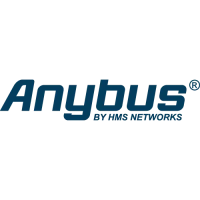Anybus CompactCom 40 EtherNet/IP
Doc.Rev. 1.5
Chapter 2
2. Basic Operation
2.1 General Information
2.1.1 Software Requirements
Generally, no additional network support code needs to be written in order to support the Anybus Com-
pactCom 40 EtherNet/IP. However, due to the nature of the EtherNet/IP networking system, certain
restrictions must be taken into account:
• Certain functionality in the module requires that the command ‘Get_Instance_Num-
ber_By_Order’ (Application Data Object, FEh) is implemented in the host application.
• Up to 5 diagnostic instances (See “Diagnostic Object (02h)” on page 97) can be created by the
host application during normal conditions. An additional 6th instance may be created in event of
a major fault.
1
• EtherNet/IP in itself does not impose any specific timing demands when it comes to acyclic re-
quests (i.e. requests towards instances in the Application Data Object), however it is generally
recommended to process and respond to such requests within a reasonable time period. The ap-
plication that sends the request, also decides the timeout, e.g. EIPScan employs a timeout of 10
seconds.
• The use of advanced CIP-specific functionality may require in-depth knowledge in CIP network-
ing internals and/or information from the official CIP and EtherNet/IP specifications. In such
cases, the people responsible for the implementation of this product is expected either to obtain
these specifications to gain sufficient knowledge or limit their implementation is such a way that
this is not necessary.
For in-depth information regarding the Anybus CompactCom 40 software interface, consult the general
Anybus CompactCom 40 Software Design Guide.
See also...
• “Diagnostic Object (02h)” on page 97 (Anybus Module Objects)
• Anybus CompactCom 40 Software Design Guide, “Application Data Object (FEh)”
1. This limit is set by the module, not by the network.

